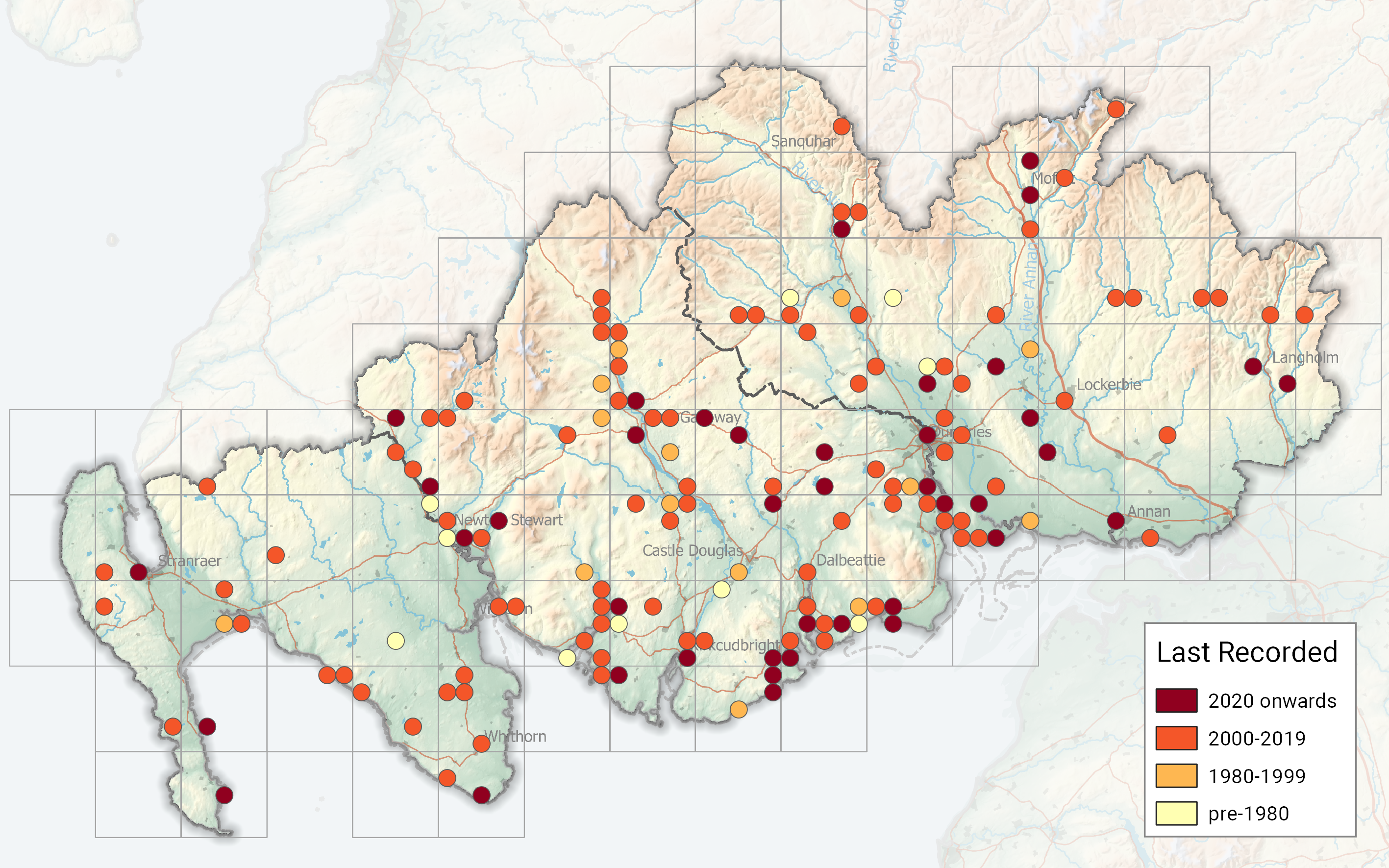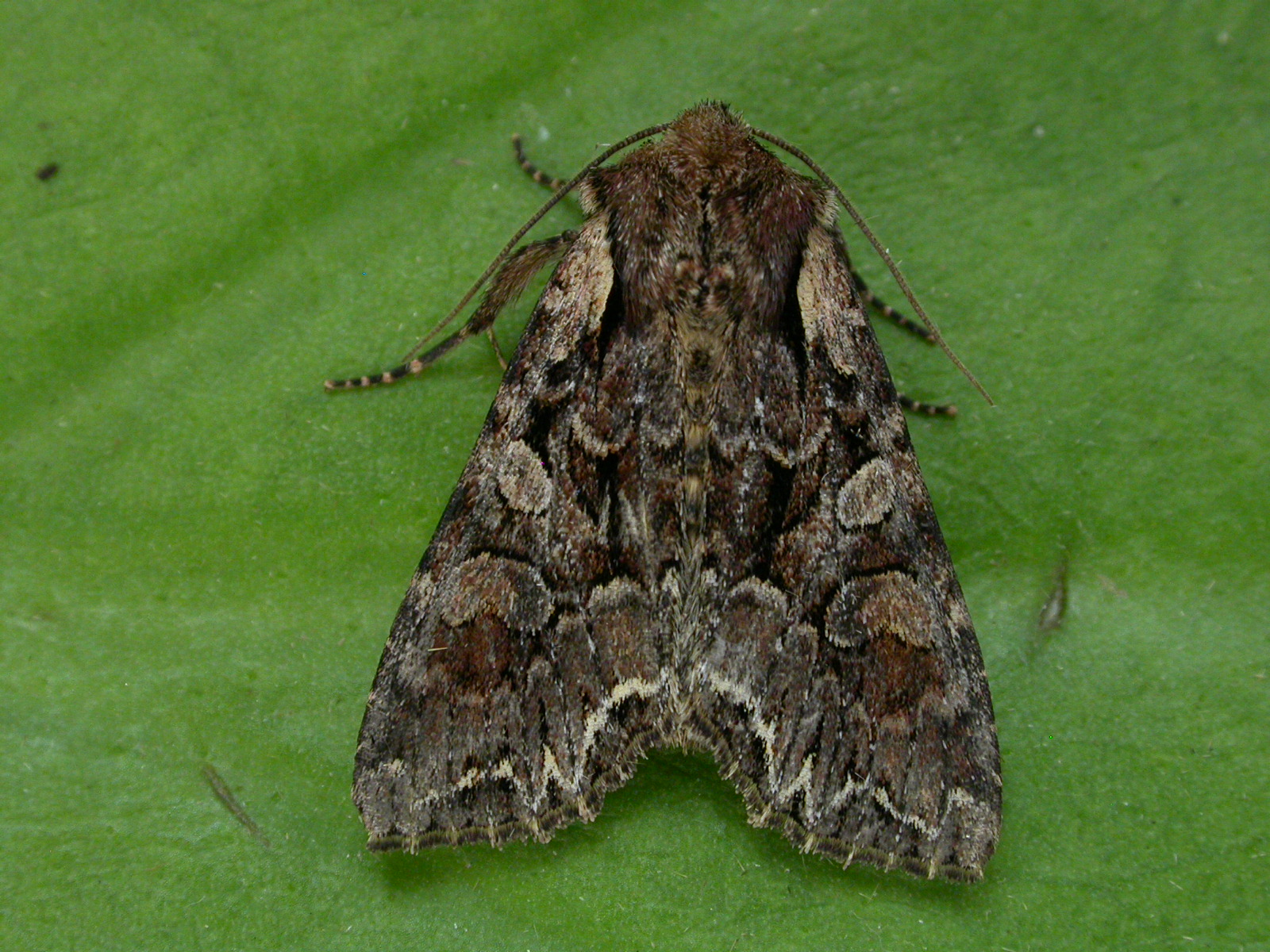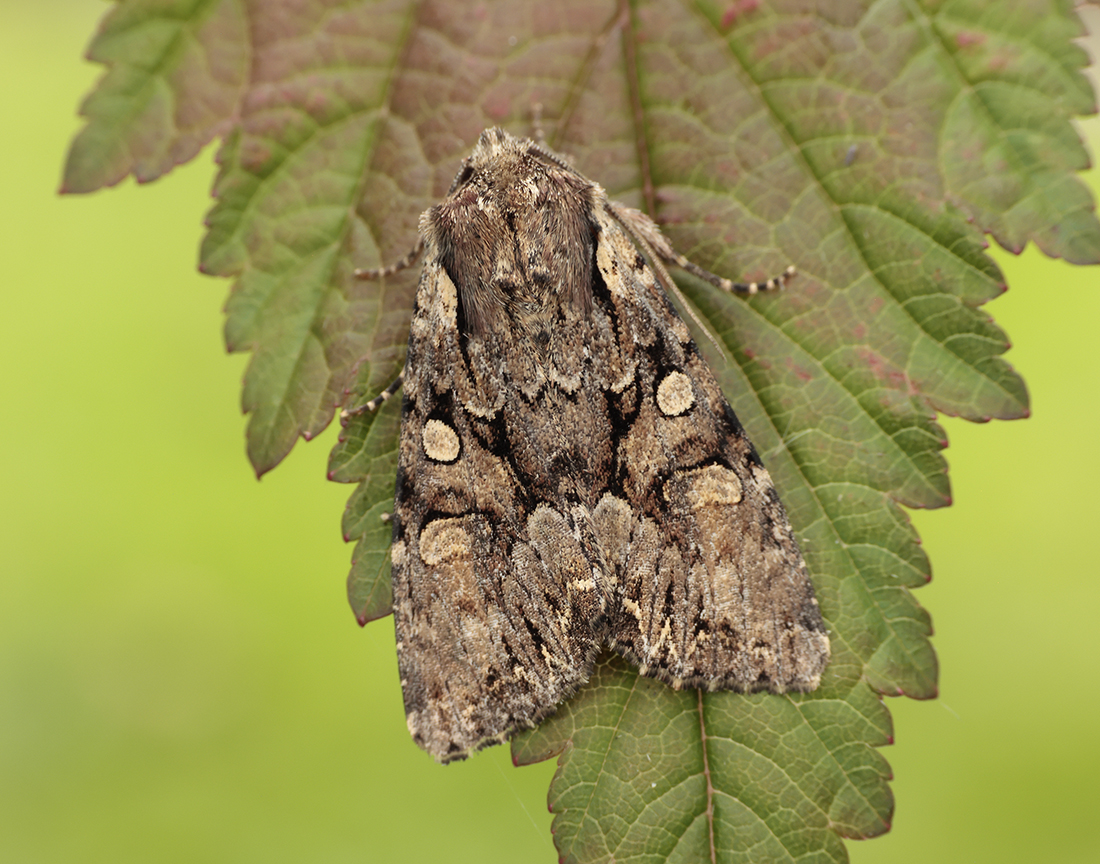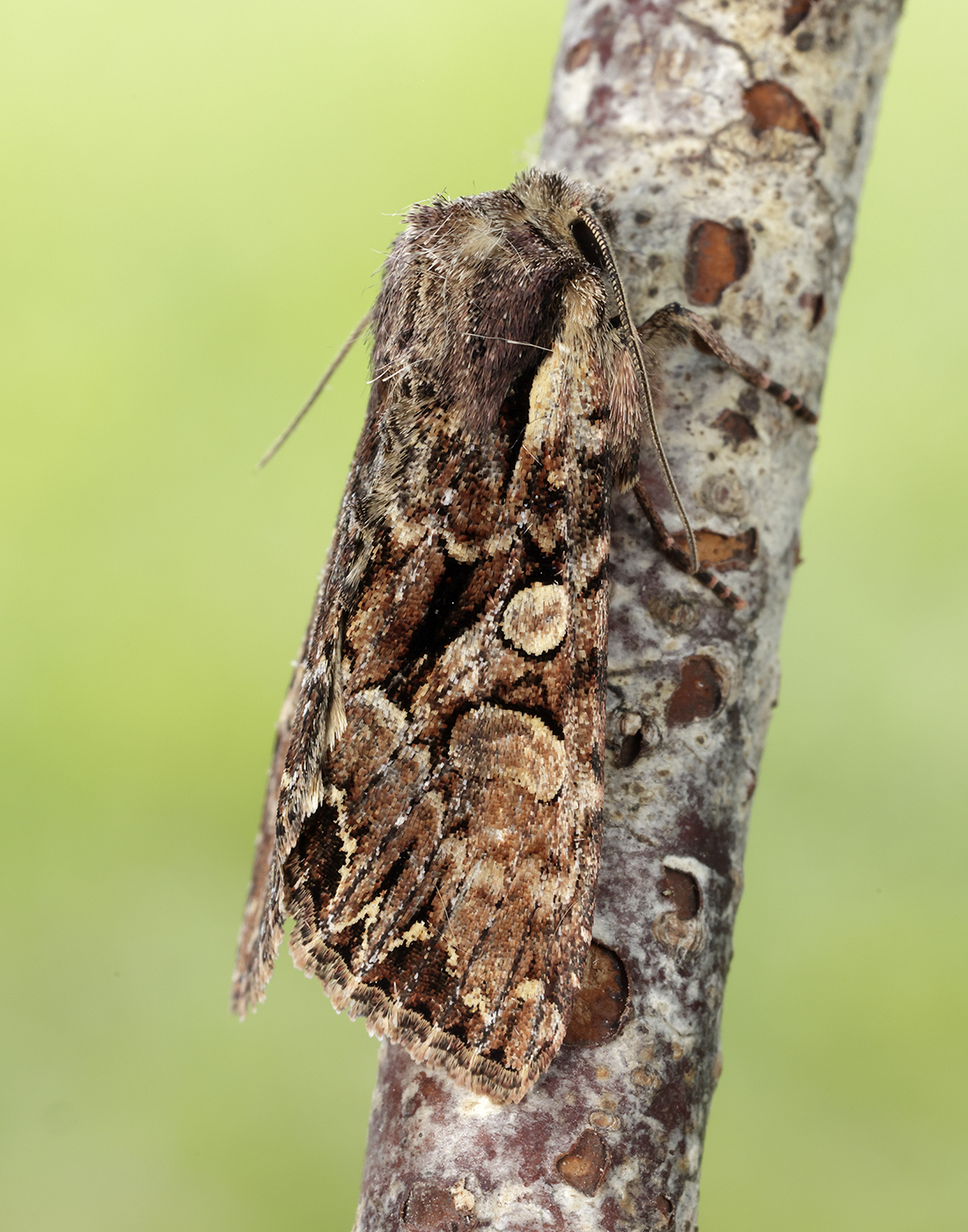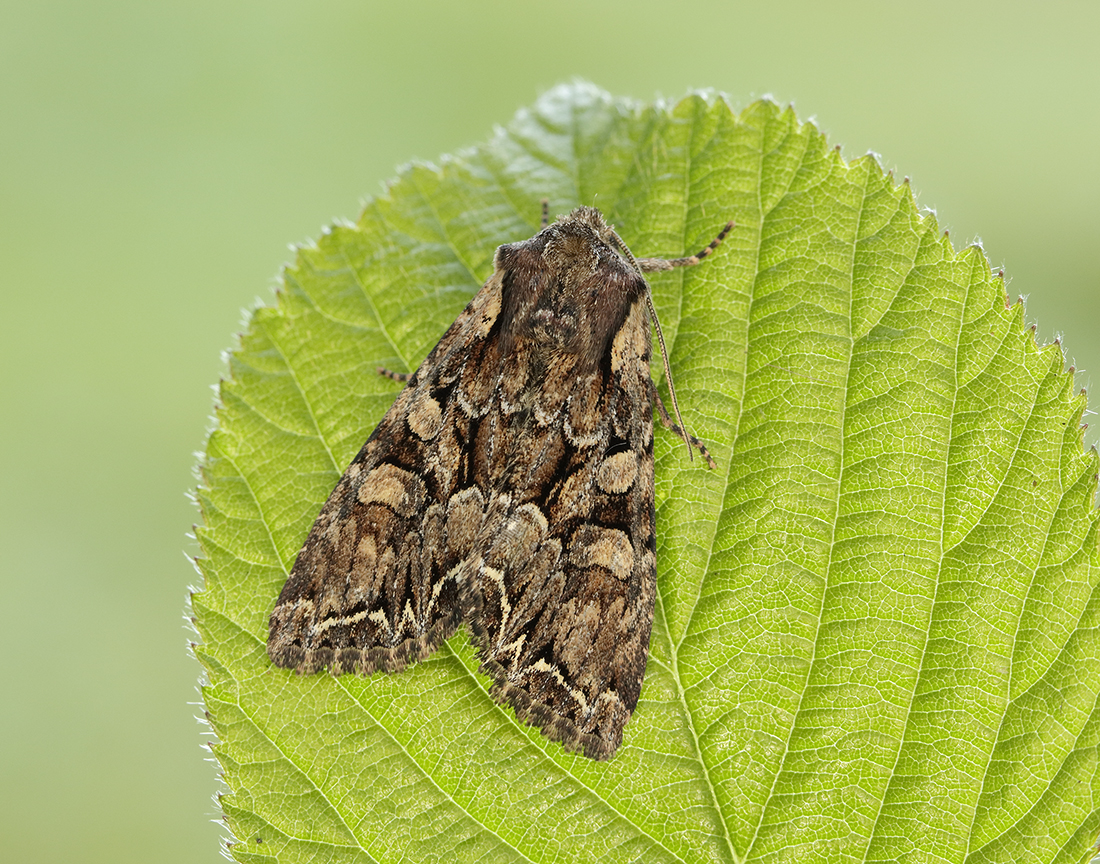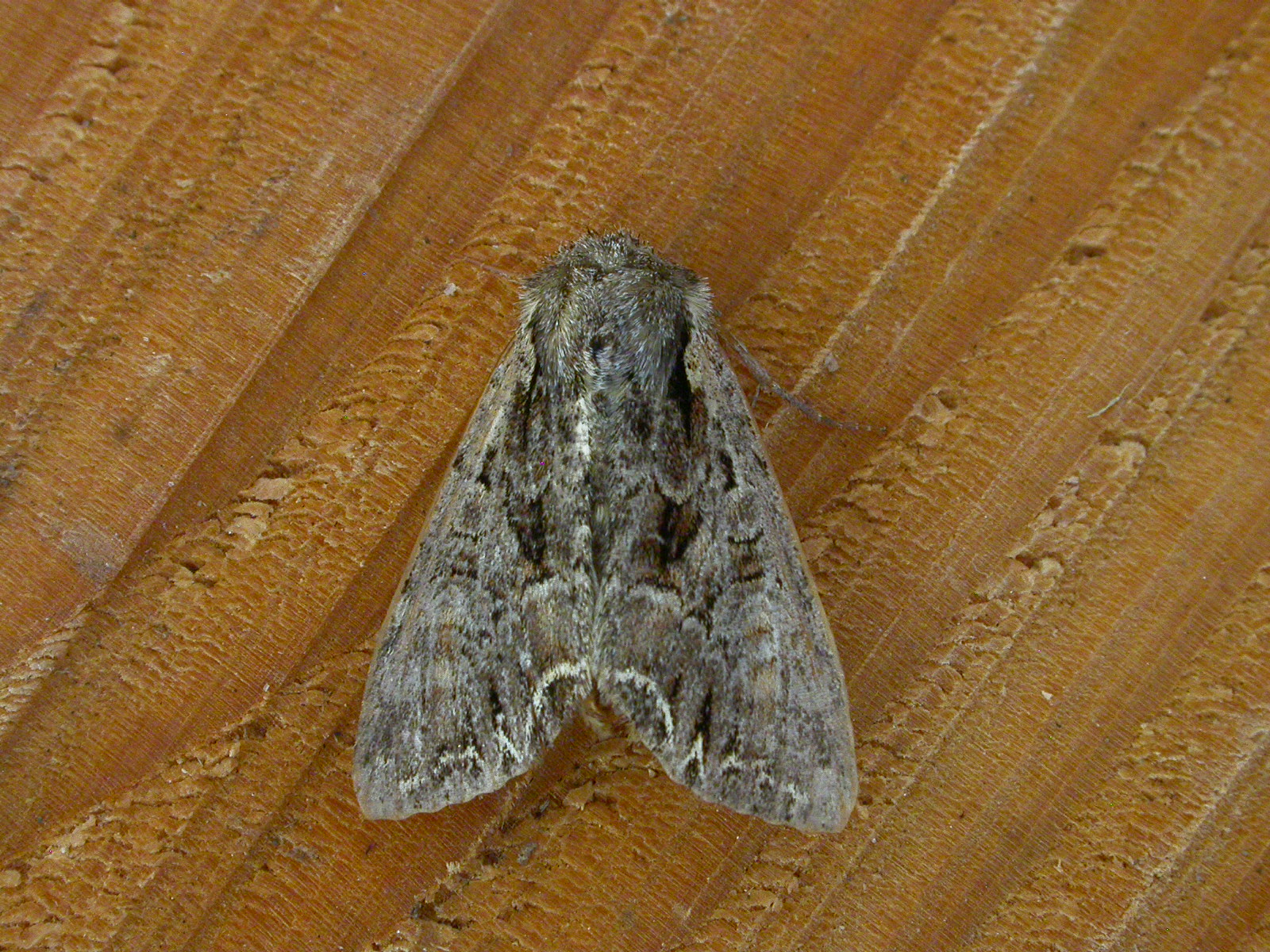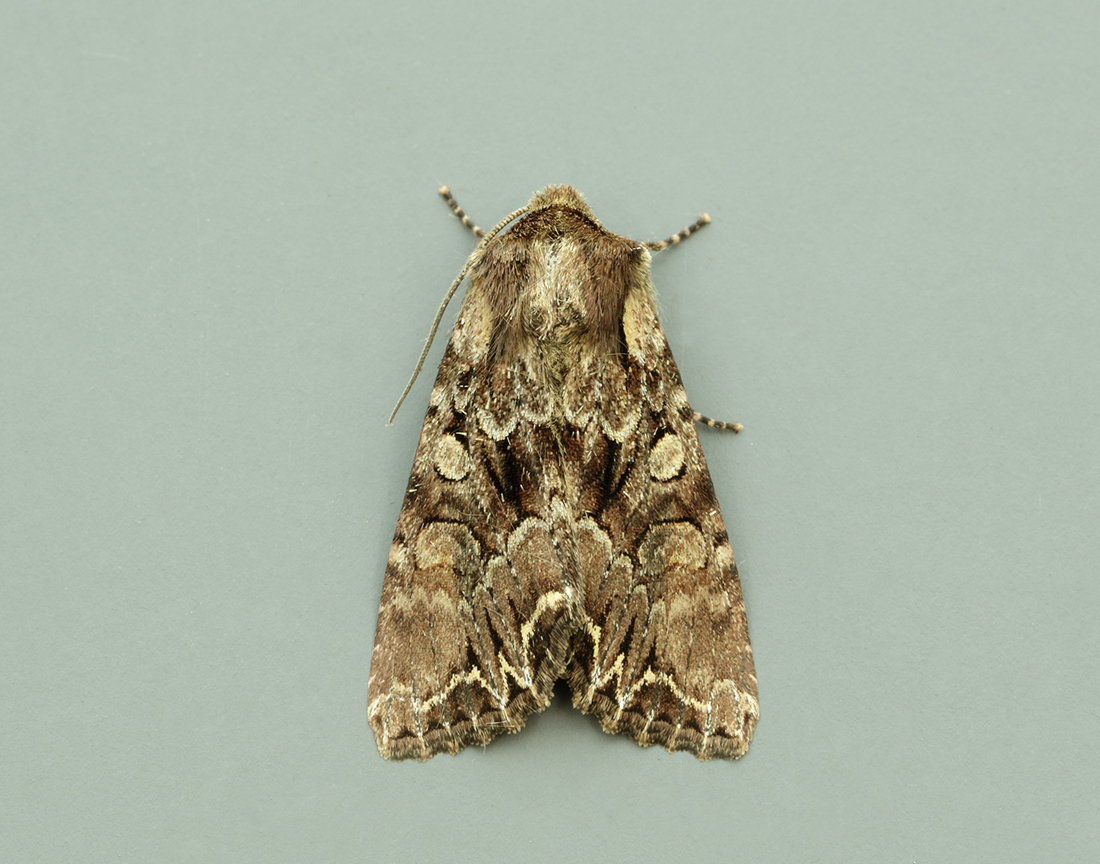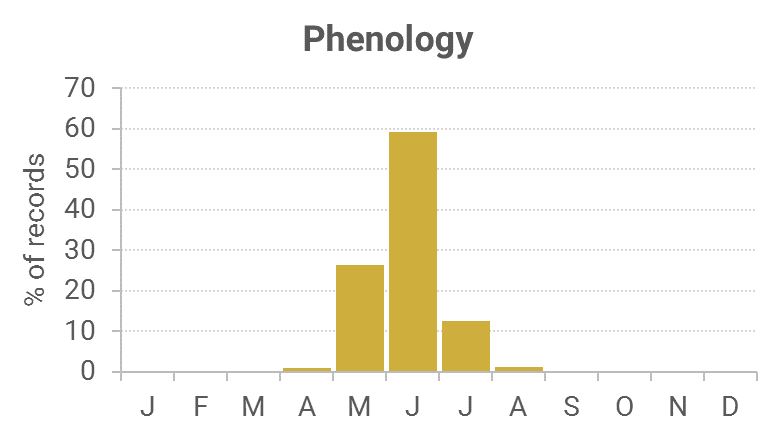Identification
The pale shoulders on a dark reddish-brown forewing that has a curved costa should aid identification.
Recording Method.
Attracted to light, also comes to sugar and flowers.
Life cycle
One generation. Overwinters as a pupa in a cocoon underground. Larvae are present late June to early September.
Larval foodplants
Oaks, Aspen, sallows, hawthorns and Honeysuckle.
Habitat
Moorland, fens, woodland and open wooded areas.
History
Lennon (1863) had stated it was rather common in his ‘List of Lepidoptera taken near Dumfries.’ Gordon (1913) had found it very common and generally distributed in Wigtownshire. Earliest date was 17th May 1911.
Sir Arthur Duncan (1909-84) during his lifetime had found it at Closeburn, Tynron and Castlehill, Dumfries (all VC72).
During 1974-92 six of the seven Rothamsted stations recorded 170 records between them with Caerlaverock not recording it. On the Hensol Estate it was trapped regularly in the early 1980s.
From 1993 to 2010 the regular trapped sites at Kirkton, Durisdeer, Cally Woods, Carsfad at Dalry, Forest Moor and Old Torr provided most of the 450 records in that period, with the rest from scattered sites across the region.

